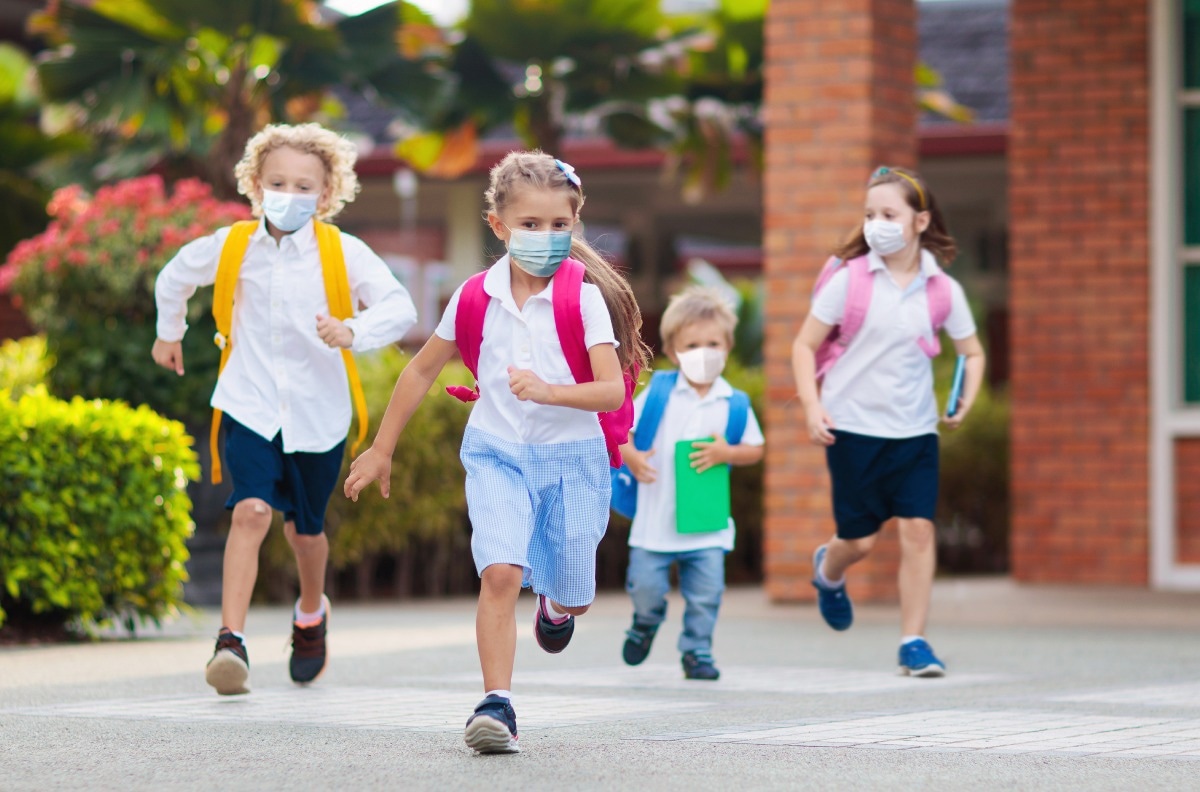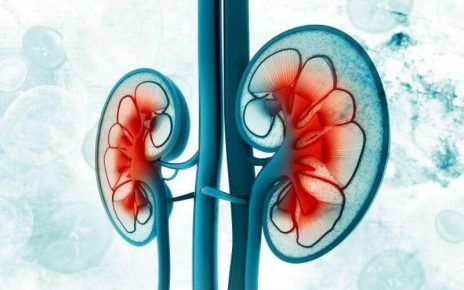In a recent review published in the Virology Journal, researchers summarized severe acute respiratory syndrome coronavirus 2 (SARS-CoV-2) infections among children pre-and post the emergence of SARS-CoV-2 Delta and Omicron variants of concern (VOCs).

The coronavirus disease 2019 (COVID-19) pandemic has led to significant morbidity and mortality across the globe. Studies have reported a higher SARS-CoV-2 prevalence among adults compared to children. However, Delta transmission was reportedly high in schools in the United Kingdom (UK), increasing pediatric COVID-19 case counts, which increased further post-Omicron emergence.
About the review
In the present review, researchers summarized existing literature on the COVID-19 scenario among children before and after Delta and Omicron VOC emergence in terms of transmission, risk factors, prevalence, clinical presentation, and associated complications.
Data were searched on Google Scholar, PubMed, and Science Direct between January 2020 and July 2022 to review the global impact of SARS-CoV-2 infections on immunocompetent and immunosuppressed children. Only original research studies on pediatric COVID-19 cases published in English were considered for the review.
Keywords such as ‘COVID-19/prevalence/clinical manifestations/complications/ children/risk factors/transmission’, ‘SARS-COV-2 Delta/Omicron VOCs’, ‘Kawasaki disease (KD)/ multiple inflammatory syndrome-children (MIS-C)’, ‘immunodepressive’, and ‘SARS-CoV-2 vaccine in children’ were used for data searches. In total, 229 studies were considered for the review.
SARS-CoV-2 incidence, prevalence and transmission dynamics in children
SARS-CoV-2 incidence among infants was found to be underestimated. SARS-CoV-2 prevalence differed among nations with high prevalence reported in the United States (the US, 23%), Spain (13%), and Saudi Arabia (13%). The differences could be due to inter-nation differences in SARS-CoV-2 testing strategies, population counts, and the degree of enforcement of non-pharmaceutical interventions such as social distancing, mask-wearing, and handwashing.
China CDC (centers for disease control and prevention) reported on 11 February 2020, that <1% and one percent of COVID-19 cases were observed among 10-year-olds and 10- to 19-year-olds, respectively. CDC reported 1.7% SARS-CoV-2 prevalence in the US among children between 12 February and 2 April 2020, which increased to 7.3% between March and July 2020. Between 5 March and 8 April 2020, 1.0% of SARS-CoV-2 cases were reported to occur among children aged below 17 years by the Chicago public health department.
Public Health England reported a rapid increase in SARS-CoV-2 incidence and hospitalization during Delta dominance, with viral transmission at schools, between May and June 2021, a finding also reported by UK Office for National Statistics among children aged seven to 11 years. Household SARS-CoV-2 transmission from children was estimated at 20%, with child-to-adult transmission and child-to-child transmission at 20%, and 17%, respectively.
Delta was reported to be 60% more transmissible than the Alpha VOC. Omicron was reported to have 10-fold and two-fold higher transmissibility than the ancestral Wuhan-Hu-1 strain and Delta, respectively. In South Africa, Omicron was estimated to have a growth advantage of 0.2 per day over Delta, corresponding to a 5.4-fold weekly increase in COVID-19 cases compared to Delta. In the US, the SARS-CoV-2-infected children hospitalized between December 26, 2021, and January 1, 2022, was almost double that reported before Omicron dominance.
Clinical manifestations, outcomes and complications
Before Delta and Omicron’s emergence, up to May 2021, SARS-CoV-2 infections among children were less severe compared to adults and most of them were asymptomatic. In symptomatic cases, mild fever, dry cough and headache were the most common symptoms. Further, symptoms such as nausea, vomiting, constipation, diarrhea, and abdominal pain were more frequent among children than adults.
Loss of smell and/or taste were less common in pediatric COVID-19 cases. During Delta and Omicron dominance, gastrointestinal (GI) symptoms were less commonly reported in China, and the frequency of nasal stuffiness, sore throat, and rhinorrhea had reduced in South Korea. COVID-19 severity was greater among immunosuppressed children with comorbidities than in immunocompetent children.
MIS-C or KD could result from the exacerbated immunological responses to COVID-19. Fatal COVID-19 outcomes were reported among 35% of primary immunodeficiency (PID) and 44% of secondary ID (SID) patients. Before Delta’s emergence, SARS-CoV-2 infection-associated complications were less frequent and were mostly reported among immunosuppressed children; however, data on the impact of infections by the Delta VOC and the Omicron VOC in immunosuppressed children are limited.
Hospitalization and intensive care unit (ICU) admission were reported in 11% to 60% and 10% of cases, respectively. Hospitalization rates were double with Delta infections than with Alpha infections; however, no significant differences were observed in COVID-19 severity outcomes. In Japan, pediatric ICU admission rates were higher for Delta infections (1.4%) than pre-Delta infections (0.1%).
Pediatric ICU visits were lower with Omicron infections than Delta infections. While the angiotensin-converting enzyme 2 (ACE2) expression and immune (innate and acquired) responses are greater among children, studies have reported that the male sex and African American or Asian ethnicity enhance pediatric susceptibility to COVID-19.
Conclusions
To conclude, based on the review findings, children are susceptible to SARS-CoV-2 infections, the symptomatology, frequency and severity of which have enhanced after Delta and Omicron emergence, warranting the need to extend COVID-19 vaccinations (such as Pfizer-Biotech’s BNT162b2 vaccine) to children.
- Khemiri, H., Ayouni, K., Triki, H. et al. (2022). SARS-CoV-2 infection in pediatric population before and during the Delta (B.1.617.2) and Omicron (B.1.1.529) variants era. Virology Journal. doi: https://doi.org/10.1186/s12985-022-01873- https://virologyj.biomedcentral.com/articles/10.1186/s12985-022-01873-4
Posted in: Medical Science News | Medical Research News | Disease/Infection News
Tags: Abdominal Pain, ACE2, Angiotensin, Angiotensin-Converting Enzyme 2, Children, Constipation, Coronavirus, Coronavirus Disease COVID-19, Cough, covid-19, Diarrhea, Enzyme, Fever, Frequency, Headache, Immunodeficiency, Intensive Care, Kawasaki Disease, Mortality, Nausea, Omicron, Pain, Pandemic, Public Health, Research, Respiratory, Rhinorrhea, SARS, SARS-CoV-2, Severe Acute Respiratory, Severe Acute Respiratory Syndrome, Sore Throat, Syndrome, Throat, Vaccine, Virology, Vomiting

Written by
Pooja Toshniwal Paharia
Dr. based clinical-radiological diagnosis and management of oral lesions and conditions and associated maxillofacial disorders.
Source: Read Full Article



